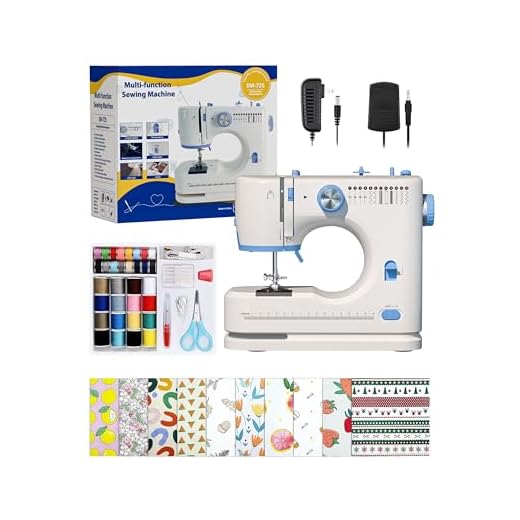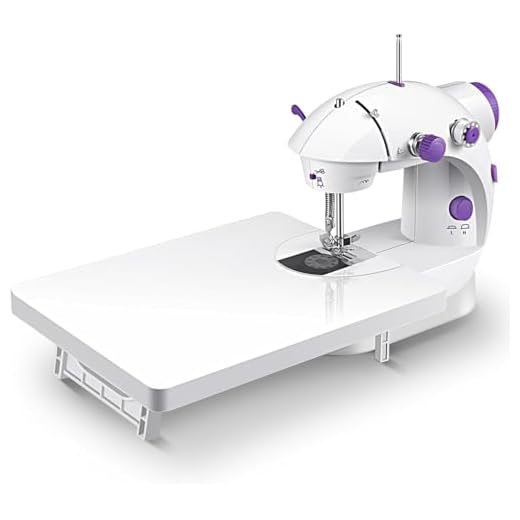Sewing machines are indispensable tools for both hobbyists and professionals, offering the means to create clothing, accessories, home décor, and more with precision and efficiency. Whether you’re a seasoned seamstress or a beginner eager to explore the world of sewing, finding the right sewing machine can elevate your crafting experience and unleash your creativity. In this guide, we’ll delve into the world of sewing machines, exploring their types, features, key considerations, and usage tips to help you make an informed decision.




















Types of Sewing Machines
Sewing machines come in various types, each tailored to specific sewing needs and skill levels:
- Mechanical Sewing Machines: Traditional sewing machines operated manually with mechanical controls, ideal for beginners or those who prefer simplicity.
- Computerized Sewing Machines: Advanced machines equipped with electronic controls and programmable settings, offering precision and versatility for experienced sewists.
- Embroidery Machines: Specialized machines designed for intricate embroidery work, featuring built-in designs, automatic thread tension, and hoop systems for precise stitching.
- Quilting Machines: Machines optimized for quilting projects, with features such as extended throat space, walking feet, and stitch regulation for smooth and accurate quilting.
Key Considerations When Choosing a Sewing Machine
- Intended Use: Determine your primary sewing needs, whether it’s garment construction, quilting, embroidery, or general crafting, to select a machine suited to your projects.
- Features: Consider the features and capabilities you require, such as built-in stitches, automatic needle threading, adjustable speed control, and speciality feet.
- Budget: Set a budget based on your sewing goals and skill level, balancing affordability with the features and quality you desire in a sewing machine.
- Brand and Reputation: Research reputable sewing machine brands known for quality, reliability, and customer support to ensure a positive sewing experience.
Buying Guide for Sewing Machines
When shopping for a sewing machine, follow these steps to make an informed decision:
- Research different types and brands of sewing machines to find models that match your sewing needs and budget.
- Read customer reviews and testimonials to learn about the experiences of other users with the sewing machines you’re considering.
- Visit local sewing machine stores or craft retailers to test-drive machines and compare features, ease of use, and overall performance.
- Consider purchasing from authorized dealers or reputable online retailers that offer warranties, customer support, and return policies.
Pros and Cons of Sewing Machines
Pros:
- Enable the creation of custom clothing, accessories, home décor, and gifts with precision and creativity.
- Offer versatility for various sewing techniques, including stitching, quilting, embroidery, and decorative embellishments.
- Save time and effort compared to hand sewing, allowing for faster project completion and increased productivity.
- Available in a range of models and price points to suit different sewing needs, skill levels, and budgets.
Cons:
- Initial investment required for purchasing a sewing machine, accessories, and supplies, which may be prohibitive for some individuals.
- Learning curve for beginners, especially when mastering machine operation, threading, tension adjustment, and troubleshooting.
- Regular maintenance and occasional repairs may be necessary to keep sewing machines in optimal condition, adding to the overall cost of ownership.
- Advanced features and technology in computerized sewing machines may intimidate or overwhelm novice users.
Usage Tips for Sewing Machines
To maximize the performance and longevity of your sewing machine, follow these tips:
- Read the instruction manual thoroughly to familiarize yourself with your sewing machine’s features, functions, and maintenance requirements.
- Use high-quality sewing machine needles appropriate for your fabric and project type, and replace them regularly to prevent damage to fabrics and machine parts.
- Clean and oil your sewing machine regularly according to the manufacturer’s guidelines to ensure smooth operation and prevent build-up of lint and debris.
- Practice good sewing habits, such as guiding fabrics evenly, avoiding sudden stops or starts, and securing threads at the beginning and end of seams to prevent unraveling.
Shopping Online for Sewing Machines
Shopping for sewing machines online offers convenience and access to a wide selection of models, brands, and price ranges. Visit reputable websites such as Amazon to browse their collections, read customer reviews, and compare features and prices. Take advantage of online tutorials, forums, and resources to research sewing machines and make informed purchasing decisions.
Customer Reviews, Prices, Coupons, and Discounts
Before making a purchase, read customer reviews and ratings to gauge the performance and reliability of sewing machines. Compare prices from different retailers to find competitive deals and consider factors such as warranties, shipping costs, and return policies. Look for coupons, discounts, and special promotions offered by retailers to save money on your sewing machine purchase.
Choosing the Right Sewing Machine
When choosing a sewing machine, prioritize features and functions that align with your sewing goals, skill level, and budget. Consider factors such as machine type, stitch options, throat space, automatic features, and brand reputation to find the best sewing machine for your needs.
Caring for Your Sewing Machine
To keep your sewing machine in optimal condition, follow these care and maintenance tips:
- Keep your sewing machine covered when not in use to protect it from dust, sunlight, and moisture.
- Clean the machine regularly using a brush or vacuum to remove lint, dust, and debris from the bobbin area, feed dogs, and needle plate.
- Oil your sewing machine as recommended by the manufacturer to lubricate moving parts and reduce friction for smooth operation.
- Check and adjust tension, stitch length, and stitch width as needed for different fabrics and sewing techniques to achieve optimal results.
Frequently Asked Questions
- Q: What is the difference between mechanical and computerized sewing machines?
A: Mechanical sewing machines are operated manually with mechanical controls, while computerized sewing machines feature electronic controls and programmable settings for precision and automation. - Q: Can I sew heavy fabrics like denim or leather with a standard sewing machine?
A: Standard sewing machines may struggle with heavy fabrics like denim or leather due to their thickness and density. Consider using a heavy-duty sewing machine equipped with a powerful motor and robust construction for sewing heavy materials. - Q: Do I need a special sewing machine for quilting or embroidery?
A: While you can use a standard sewing machine for quilting or embroidery projects, specialized quilting machines and embroidery machines offer features and capabilities tailored to these specific techniques, such as extended throat space, stitch options, and hoop systems. - Q: How often should I service my sewing machine?
A: It’s recommended to service your sewing machine annually or every 100 hours of use, whichever comes first, to keep it in optimal condition. Regular servicing by a qualified technician can prevent mechanical issues, prolong the lifespan of your machine, and ensure consistent stitching performance. - Q: Can I sew without a sewing machine?
A: While sewing machines offer efficiency and precision, you can still sew by hand using basic sewing techniques and supplies like needles, thread, and fabric. Hand sewing allows for greater control and customization but may be more time-consuming than using a sewing machine for large or complex projects.
Conclusion
Sewing machines are versatile and indispensable tools for sewing enthusiasts, offering endless possibilities for creativity, expression, and craftsmanship. Whether you’re stitching garments, quilts, home décor, or accessories, finding the right sewing machine can enhance your sewing experience and bring your creative visions to life. By considering factors such as machine type, features, budget, and maintenance, you can choose a sewing machine that meets your needs and inspires your sewing journey for years to come.






